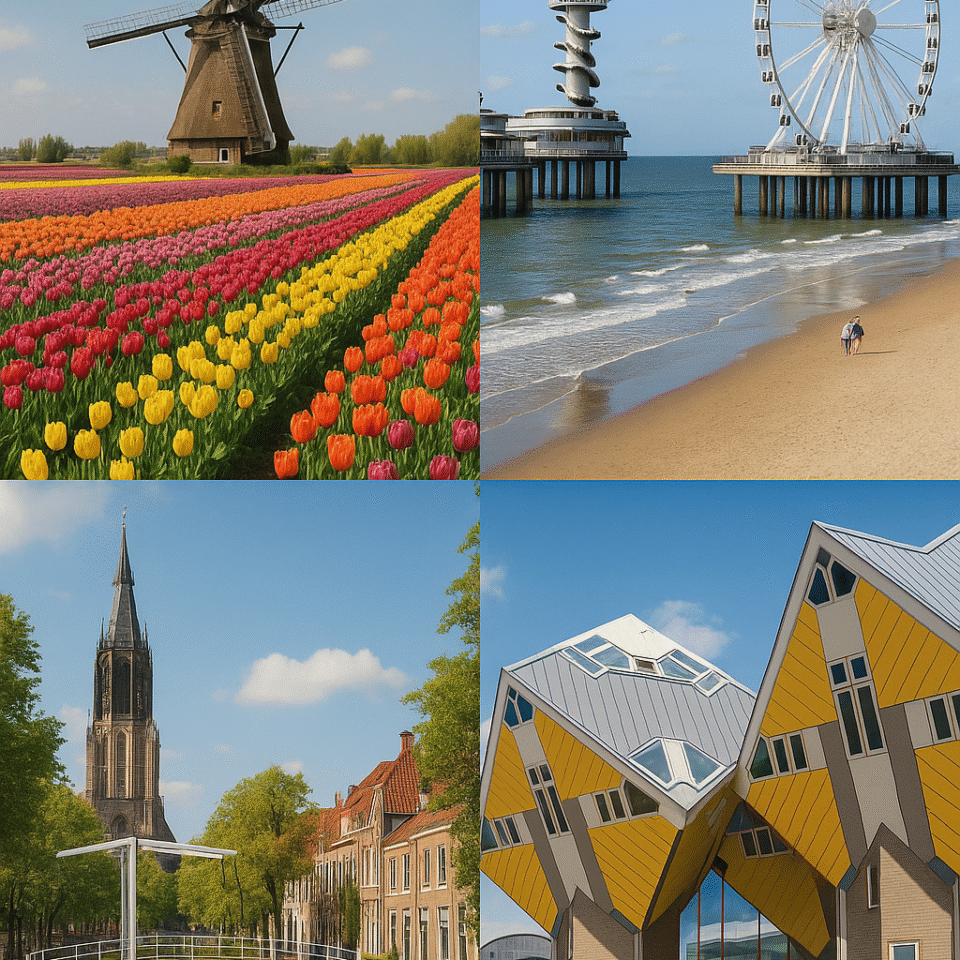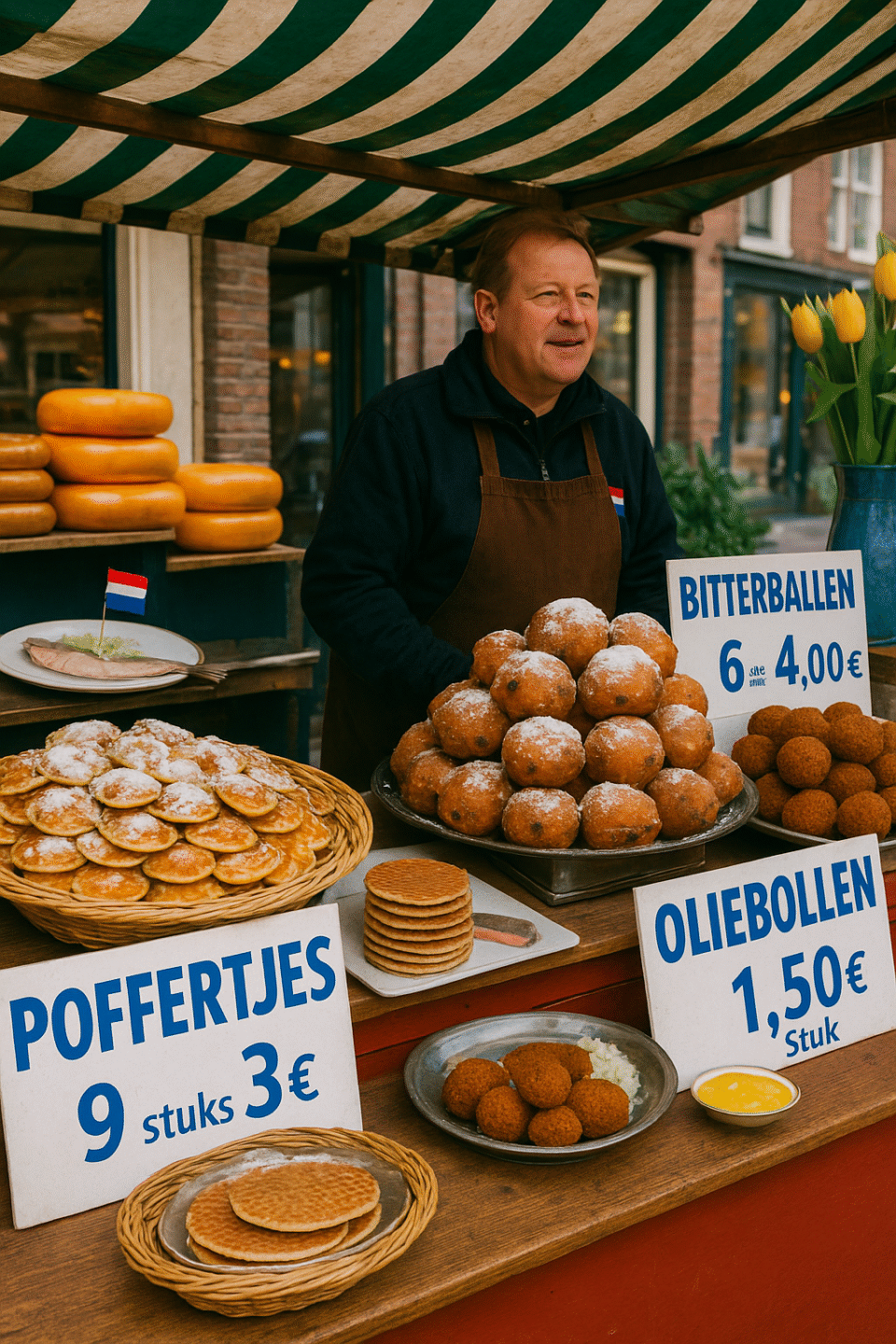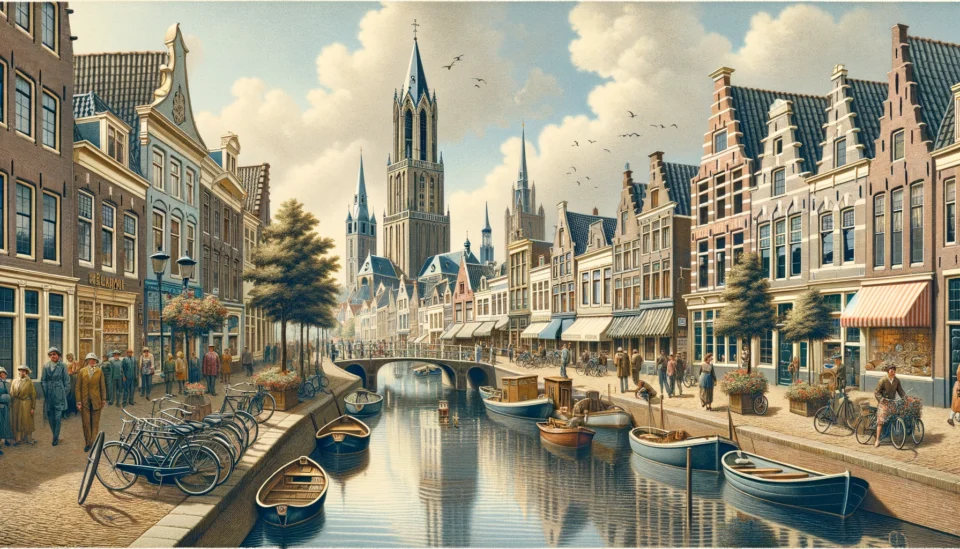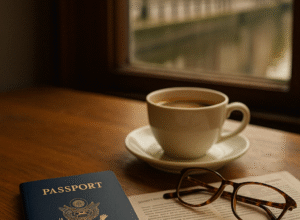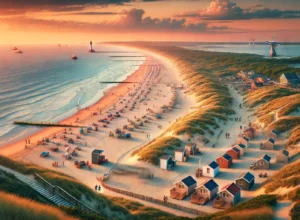Living in The Hague offers you the perfect home base to explore the Netherlands’ diverse attractions. While the administrative capital itself has plenty to offer, the compact nature of this small country means you can easily experience completely different Dutch environments within just 15-40 minutes by train. Whether you’re an American expat living in the Netherlands or just visiting for an extended stay, these nearby destinations provide the perfect weekend escape from your Hague routine.
1. Delft: A Journey Through Dutch History
Just 15 minutes from The Hague by train lies Delft, a quintessentially Dutch city that feels like stepping directly into a Golden Age painting. For Americans accustomed to sprawling urban landscapes, Delft’s preserved historic center offers a concentrated dose of old-world European charm.
Delft’s fame comes primarily from two things that Americans immediately associate with Dutch culture: the iconic blue and white Delftware pottery and the painter Johannes Vermeer. The Royal Delft factory offers tours where you can watch artisans hand-paint using techniques virtually unchanged since the 17th century—an experience that connects you directly to Dutch craftsmanship traditions.
The leaning tower of the Old Church (Oude Kerk) provides both a striking photo opportunity and historical significance as Vermeer’s final resting place. Americans often find themselves captivated by Market Square, where the impressive Renaissance-style City Hall stands in stark contrast to the open-air markets and café terraces that bring the space to life.
For a deeper cultural immersion, the Vermeer Centrum provides context for understanding how this master painter captured the quiet dignity of everyday Dutch life—a value that still permeates the culture today.
2. Rotterdam: Modern Architecture and Innovation
Rotterdam offers perhaps the most dramatic contrast to American expectations of the Netherlands. After being nearly completely destroyed during World War II, the city rebuilt itself as a laboratory for bold architectural experimentation rather than attempting to recreate its past.
A 20-minute train ride from The Hague transports you to a city that feels more like a futuristic vision than a traditional European destination. For Americans accustomed to cities defined by their skylines, Rotterdam delivers with distinctive landmarks like the pencil-shaped Euromast Tower, which provides panoramic views extending to The Hague on clear days.
The Markthal represents Rotterdam’s innovative spirit perfectly—this massive food hall combines residential apartments with a stunning arched ceiling covered in colorful artwork depicting oversized fruits, vegetables, and foods. Americans will appreciate the international food options alongside Dutch specialties.
The famous Cube Houses (Kubuswoningen) provide the perfect Instagram opportunity while challenging American notions about what residential architecture can be. For $8, you can tour the “Show Cube” to see how residents adapt to living in these tilted boxes.
For an authentic Rotterdam experience, hop aboard one of the yellow water taxis that zip across the Maas River. This transportation method reflects Rotterdam’s continuing relationship with water and maritime trade—something that shaped the Netherlands throughout its history.
3. Leiden: Academic Heritage and Canals
Leiden, the birthplace of Rembrandt and home to the country’s oldest university, offers a perfect blend of cultural significance and picturesque canal views just 15 minutes from The Hague by train.
For Americans interested in educational history, Leiden University (founded in 1575) provides beautiful grounds to explore, along with the historic Hortus Botanicus—one of the oldest botanical gardens in the world. The garden’s collection of over 10,000 plant species from around the globe offers a peaceful retreat from urban exploration.
The National Museum of Antiquities (Rijksmuseum van Oudheden) houses impressive Egyptian, Roman, and Greek collections that will satisfy history enthusiasts. Americans often find the Egyptian temple particularly impressive—a complete temple from 2,000 years ago that was given to the Netherlands by Egypt.
Exploring Leiden’s canals offers a more intimate experience than the busier waterways of Amsterdam. A guided boat tour provides insight into the hidden hofjes (almshouse courtyards) and historical significance of the city’s relationship with water.
Visiting during October? You might encounter Leiden’s biggest annual celebration, Leidens Ontzet, commemorating the 1574 end of the Spanish siege. This distinctly Dutch celebration includes a massive fair, traditional foods like hutspot (carrot and onion stew), and free herring and white bread distributed to citizens—cultural traditions that have remained unchanged for centuries.
4. Keukenhof Gardens: The Ultimate Spring Experience
For Americans visiting between mid-March and mid-May, Keukenhof Gardens in Lisse (about a 30-minute drive from The Hague) offers the quintessential Dutch spring experience with over 7 million flowering bulbs spread across 79 acres.
This spectacular display of tulips, daffodils, and hyacinths represents Dutch expertise in floriculture on a grand scale. For Americans who might only associate the Netherlands with tulips in a general way, seeing the breathtaking color palette of these cultivated gardens provides context for why flower cultivation became so central to Dutch cultural identity and economy.
The gardens’ different themed sections showcase various landscaping styles, from English gardens to Japanese water gardens. The traditional windmill within the park offers visitors the chance to climb up for panoramic views of the surrounding commercial bulb fields—vibrant stripes of color extending to the horizon.
To make the most of your visit, book tickets online to avoid lines, and consider arriving early in the morning or later in the afternoon when crowds thin out. For transportation from The Hague, the Keukenhof Express Bus offers direct service during the garden’s open season.
5. Gouda: More Than Just Cheese
Americans might know Gouda only as a type of cheese (often mispronounced), but the charming town that gave the cheese its name offers a delightful day trip just 30 minutes from The Hague by train.
The Gouda Cheese Market, held every Thursday morning from April through August, recreates the traditional cheese trading spectacle that has taken place in front of the old City Hall since the Middle Ages. For Americans, this theatrical display of cheese farmers and traders negotiating through ritualized hand claps provides insight into how commerce has shaped Dutch cultural traditions.
Gouda’s City Hall (Stadhuis), built between 1448 and 1450, stands as one of the oldest Gothic town halls in the Netherlands. The building’s distinctive facade becomes even more impressive when illuminated at night.
St. John’s Church (Sint Janskerk) contains some of the finest stained glass windows in the Netherlands, many dating from the 16th century. The 123-meter length makes it the longest church in the country—a fact that surprises many American visitors more familiar with taller European cathedrals.
No visit to Gouda would be complete without sampling a fresh stroopwafel—two thin waffles stuck together with a caramel-like syrup. The best ones come hot off the iron at the local market.
6. Scheveningen: The Hague’s Seaside Resort
For a change of pace without leaving The Hague municipality, Scheveningen offers a distinctive beach resort experience just a short tram ride from the city center.
For Americans who might not associate the Netherlands with beach culture, Scheveningen often comes as a pleasant surprise. During summer months, the wide sandy beach fills with characteristic blue-and-white striped chairs and thatched beach pavilions serving food and drinks directly on the sand—a distinctly Dutch approach to beach leisure.
The landmark Scheveningen Pier extends 382 meters into the North Sea, culminating in a platform that hosts restaurants, shops, and even a zip line and bungee jumping installation for thrill-seekers. The 50-meter-high Ferris wheel provides excellent coastal views.
Families appreciate SEA LIFE Scheveningen, an aquarium featuring marine creatures from around the world, including a walk-through ocean tunnel where sharks swim overhead.
The historic Kurhaus hotel, with its distinctive domed silhouette and late 19th-century architecture, stands as a reminder of Scheveningen’s long history as a fashionable seaside resort. Even if you’re not staying there, the building merits a visit for its grand façade and elegant interior.
7. Haarlem: The Perfect Alternative to Amsterdam
Located just 40 minutes from The Hague by train, Haarlem offers the historic charm and canal beauty that many Americans seek in Amsterdam, but with significantly fewer tourists.
The city center follows the typical Dutch pattern with canals radiating out from a central market square (Grote Markt), dominated by the impressive Gothic St. Bavo’s Church. Inside this church sits one of the world’s most famous organs, once played by both Handel and the young Mozart.
Teylers Museum, the oldest museum in the Netherlands (opened 1784), houses an eclectic collection spanning art, natural history, and scientific instruments. For Americans interested in the Dutch Golden Age, the Frans Hals Museum showcases works by the expressive portrait painter who called Haarlem home.
Craft beer enthusiasts will appreciate visiting Jopenkerk—a brewery housed in a converted church that produces beers based on historic Haarlem recipes dating back centuries.
For nature lovers, the nearby Zuid-Kennemerland National Park offers a surprisingly diverse landscape of coastal dunes, forests, and even a chance to spot Dutch wildlife including highland cattle and European bison.
Practical Transportation Tips for Weekend Explorations
For Americans used to car-dependent travel, the ease of Dutch public transportation comes as a welcome surprise. The NS (Nederlandse Spoorwegen) train network connects all these destinations efficiently, with regular service and relatively affordable fares.
The NS travel planner helps you check schedules and even purchase mobile tickets. Consider buying an OV-chipkaart for seamless transfers between trains, trams, and buses across the country. For weekend trips, the NS often offers special group discount tickets that can significantly reduce travel costs.
Bicycle rental provides another authentically Dutch way to explore these destinations once you arrive. Most train stations offer OV-fiets rental bikes for around €4.15 per day for OV-chipkaart holders.
Embrace the Variety Just Beyond The Hague
The beauty of basing yourself in The Hague lies in the remarkable diversity of experiences available within such short travel distances. From traditional Dutch scenes in Delft and Gouda to cutting-edge architecture in Rotterdam, these accessible destinations offer Americans a more comprehensive understanding of the Netherlands beyond tourist stereotypes.
These weekend getaways allow you to experience the Netherlands as locals do—appreciating both the preserved historical elements and the forward-thinking innovations that characterize this small but diverse country. Each destination offers its own unique perspective on Dutch culture, giving you a more nuanced appreciation for your temporary home in The Hague.
Which of these Dutch gems will you explore first? Pack your weekend bag, grab your camera, and discover why the Netherlands offers some of Europe’s most rewarding shorter trips—all conveniently accessible from your base in The Hague.
